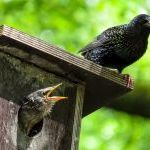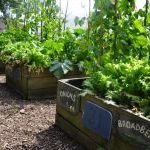School nature garden
The main idea of the project was to create a planet friendly space around the school for educational activities and recreation. Flowerbeds, a sundial, and a vegetable garden were created around the school; herbs, fruit bushes, and common tree species were planted, as well as a small heath, a rock garden, and a flower meadow. Younger pupils in the school took care of the flowerbeds and older pupils from the elementary school planted different kinds of vegetables. New species of herbs, an apple tree, and a plum tree were also planted in the garden.
Website
Country
Media
* TOP TIP *
'Carry out an annual garden survey to see how many different plants and animals are in your garden'
How is the project linked to climate change & sustainability?
The project is linked to the theme of sustainability and climate change because it gives children what they need to have knowledge and respect for nature. Children have the opportunity to have many diverse experiences based on the different seasons and activities that take place.
Who is involved?
The school nature garden is a whole school project that everyone is encouraged to get involved with. To date, there have been 20 early years children, 77 middle school children and 134 elementary school children involved. In addition, caregivers and teachers have also been encouraged to get involved in the project.
How are the participants involved?
The early years children are supported to tend the flower beds and to choose bee friendly plants for the beds. Pupils from the elementary school plant different kinds of vegetables in the school vegetable garden, from which they will prepare dishes during their November "Healthy Food and Cooking Day". After learning about ecosystems and habitats, the middle school students have decided to plant a number of heathland plants including different varieties of heathers, azaleas, rhododendrons and blueberries. They started by learning about the special requirements of these plants and prepared a suitable substrate in which they planted the seedlings. An alpine garden was also made where different species of perennials and shrubs were planted. Other pupils took part in activities led by the Zaporowo Forestry Commission resulting in a number of nesting boxes for birds being installed on trees around the school. An animal-friendly corner was also created in the garden.
Key steps
- Identify a suitable growing space in your school
- Plan the area thinking about where the paths and growing beds will go
- Enlist from parents, colleagues and local businesses help to construct your garden
- Source your growing kit like tools and seedlings
- Work with the children to plan your growing calendar
- Research animal friendly gardening methods and implement them in your garden
- Build bird boxes and hang them in trees around the school


